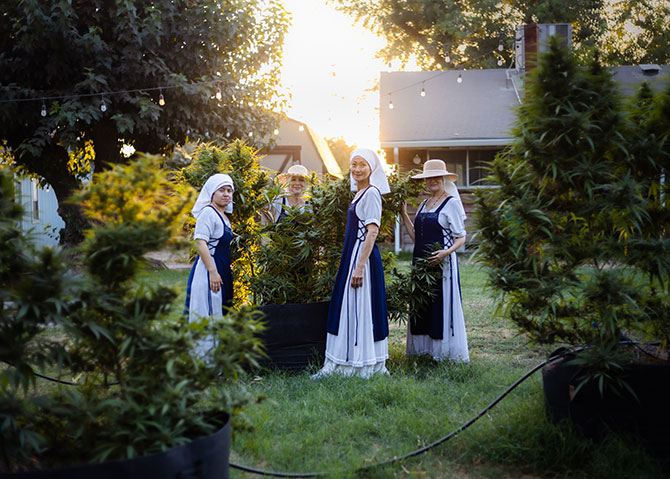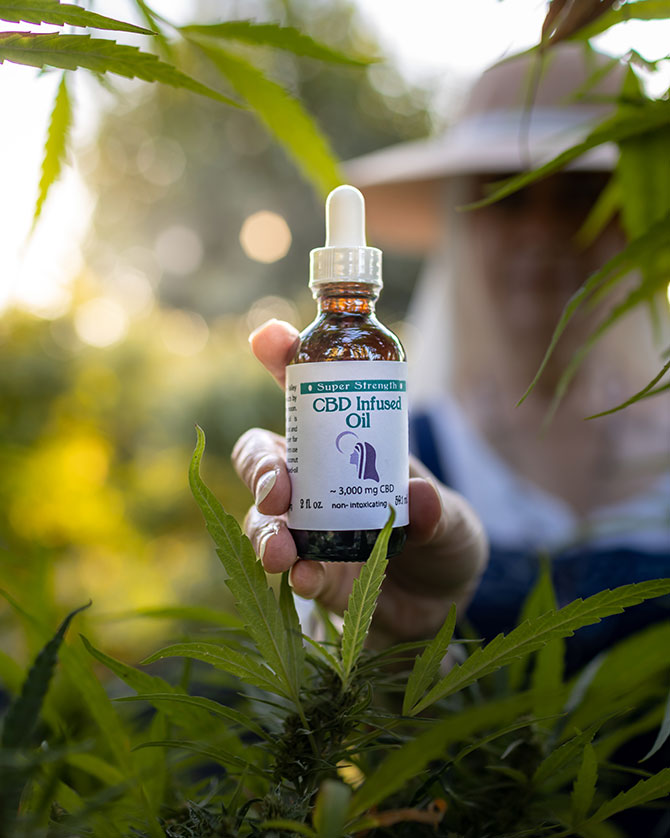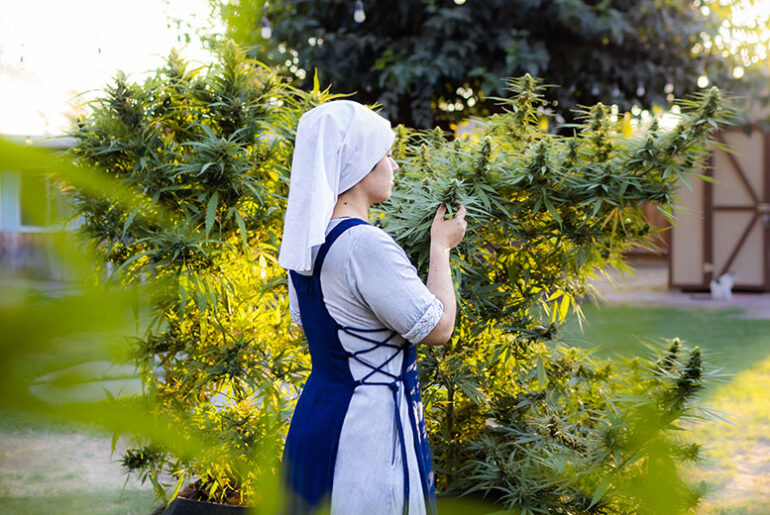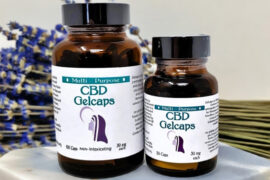Let’s begin with science. The term ‘marijuana’ is a slang term given the plant, popularized by Harry Anslinger, and according to the Oxford English Dictionary, the term may come from the Nahuatl mallihuan, meaning “prisoner”.
Cannabis is the scientific term for hemp. Cannabis is hemp. Hemp is cannabis. Marijuana isn’t a proper term for either.
If you look up the word ‘hemp’, all dictionaries will tell you in the very first definition, that it is cannabis. If you look up the word ‘cannabis’, all dictionary definitions will include ‘hemp’. Now look up the definition of ‘marijuana’ and it will say ‘cannabis’. So there you have it.
Cannabis = hemp = marijuana.
Scientifically speaking, we are referring in all cases about the same plant species.
Now that we are clear on the definitions, we have to consider that mankind often pollutes the language by using words falsely and over time, they stick. We know that from tinctures. Everyone in the cannabis industry calls anything with a dropper, tincture. That’s not true. A ‘tincture’ means that it pulls the medicine from the plant using alcohol. If there is no alcohol in the bottle, you don’t have tincture.
The same language sloppiness is happening with cannabis and hemp and this time, we can thank our government and all governments participating in the word play. It’s too much to say ‘non-psychotropic strains’ versus ‘psychotropic strains’, so what has happened, is that hemp has become synonymous with industrial use, growing the plant for fiber and stalk. Cannabis is the term being used to describe psychoactive plant strains.

What Is Cannabis?
Cannabis is a perennial plant grown for recreational and medicinal purposes. Knowledge of the beneficial properties of the cannabis plant dates back thousands of years. In fact, it was a multipurpose plant in ancient China, used to manufacture rope, clothes, and traditional folk cures.
The term “cannabis” refers to a genus of flowering plants that are members of the Cannabaceae family, which has roughly 170 different plant species. The genus is commonly divided into three subspecies — Cannabis Sativa, Cannabis Indica, and Cannabis Ruderalis.
The Sativa and Indica subspecies are the most well-known varieties of the cannabis plant. Each has unique properties and traits, which lead to various effects on consumers. Even though there’s no scientific evidence, Indica is reported to give a “body high” that’s believed can relieve pains, whereas Sativa is generally perceived as a strain that energizes and gives a “heady high.” Ruderalis has naturally low THC- and high CBD levels. Due to its fibrous stems, the strain is more suitable for use in the textile industry.More than 540 different chemical substances have been identified in the cannabis plant, with cannabinoids being the plant’s most potent constituents. It includes over 100 cannabinoids, most notably – CBD and THC.
- CBD: Although a psychoactive cannabinoid, CBD won’t make you feel intoxicated or euphoric, so you won’t get “high.” A 2021 study suggests that in patients with moderate to severe symptoms, CBD-rich therapy had a positive effect on the subjects’ pain, anxiety, and depression symptoms, as well as their general well-being.
- THC: This is the main psychotropic element in the cannabis plant. THC causes the “high” that’s typically associated with cannabis. Most cannabis plants and cannabis-derived products contain substantial amounts of THC, about 5%-35%.
Contemporary Use of the Term “Hemp Plant”
Even though hemp is the old english name for cannabis, today, the industries and the governments consider hemp to be the name used to define cannabis grown for industrial purposes. The law in America and most places say that less than 0.3% THC content is required to be legally referred to as hemp. Because it contains so little THC, it cannot get you “high.”
Government laws are forming for hemp (industrial) and cannabis (psychotropic), and that leaves a big hole in regard to the laws for medicinal hemp. The US government is wrestling with regulations for this industry now. The industry that works between those two industries: medicinal cannabis (high THC) and industrial hemp. There is no category for ‘medicinal hemp’. No wonder there is confusion, right?Regardless of the government and the FDA being so slow to catch up, the industries are booming. Thanks to its extraordinary nutrient profile and adaptability as an industrial commodity, the entire hemp plant, including the hemp seeds, stalk, leaves, and buds, are used to make various goods like the Sisters’ salves, soaps, tinctures, oils, and capsules.
Contemporary Use of the Term Marijuana Plant
‘Marijuana’ is considered a racist term and is being phased out of use in California and other places. When it is used, people are referring to psychotropic cannabis.
Growing Industrial Hemp versus Medical Cannabis
The following list highlights some of the key distinctions between growing industrial hemp versus medical cannabis. The two have notable differences in terms of cultivation, chemical composition, use, and legal status.
Plant Growth
Industrial hemp requires growing the plants very close together, in which case, the stalks get fat and there is little room for kolas (the green flower bud of the plant). For industrial hemp, the point is getting the stalks thick to use for paper. Letting the males live among the female plants is a way to grow seeds, in which case, the plants are given more space. Depending on how it’s grown, this cannabis plant can grow to heights of 12 feet.
For medical use, the plants are given plenty of space and individual treatment. When the plant is allowed to stretch out and grow, it produces fan-shaped leaves and an extended stalk covered in trichomes. The flowers in the cannabis plant are crammed into bud-like formations.
Plant Cultivation
Industrial hemp is cultivated outdoors with the goal of producing large quantities of stalks and seeds. Farmers cultivate hemp using a crop rotation technique that protects against disease and pests and restores the nutrients in the soil. The hemp plant grows best in sand loams, and temperate regions with good drainage and regular rainfall. Hemp can be planted more densely — you could grow 100 to 120 plants per 4 square feet if they are grown for fiber, or 40 to 60 plants if they are grown for oil.
Conversely, medical cannabis is frequently grown in greenhouses to encourage development and help preserve the plant’s valuable buds and oils.
Chemical Structure
Tetrahydrocannabinol, or THC, is the psychoactive substance that distinguishes marijuana from hemp. To be categorized as hemp, a plant’s dry weight THC content must be less than 0.3%. In addition to low THC content, hemp has a high CBD level. On the other hand, the THC level of psychoactive cannabis typically ranges from 10% to 35%, with lower CBD levels.
Legality
Medical cannabis and hemp fall under different legal categories. Generally, it’s legal to cultivate and possess hemp, whereas psychotropic cannabis is not, though local laws might drastically differ on this topic. The plant is not acknowledged as a legitimate drug by the federal government. Most states, nevertheless, permit cannabis use for both medical and recreational purposes. More and more countries are decriminalizing, and heading towards creating their own legalized systems of safe access for the people.
Hemp farming was severely regulated by the US federal government until recently. Farmers had to apply and were subject to several degrees of inspection, control, and taxation in order to cultivate the plant. Hemp farming became legal country-wide following the passage of the 2018 Farm Bill. Farmers are now allowed to grow hemp on their property as long as the plant they select produces less than 0.3% THC by dry weight. Note that the Hemp Industry Association and others are challenging the .3% in the field, because 1% or less is more reasonable and makes no difference to the consuming public. You need 3% to 5% THC to register any kind of psychoactive effect or to test positive for THC on a drug test. The relaxing of the production rules so that growers can have 1% THC in the ground, is coming.
Effects on the Body
The hemp plant technically does register a psychoactive response, or it wouldn’t be medicine. It wouldn’t work so well with pain and sleep if it didn’t register in the endocannabinoid system some amount of psychoactive response. But the correct way of saying it is that the hemp plant produces no psychotropic effects, meaning, it’s a medicine that doesn’t get you high.

Cannabis, Hemp, Marijuana
Despite having three names that are used to describe one plant, the understanding of the plant is at early stages. There was so much misinformation spread, it is not surprising that we landed here with a word soup that confuses more than enlightens.
Hemp is generally used to describe the industrial hemp world, going for stalks and fiber and fuel and seeds. Massive grows – biomass, they call the end harvest. Marijuana is a term we don’t use because it came of age and popularity in a mission to make pot-smoking a Mexican problem and a menace to our society. It was used to justify taking land and homes from the Mexicans of California. Cannabis is the term that we all prefer, the scientific term, for the plant. But when we are taking a trip to a dispensary, we just say ‘I’m running out for some weed.’ Everyone knows what that means.







Comments are closed.